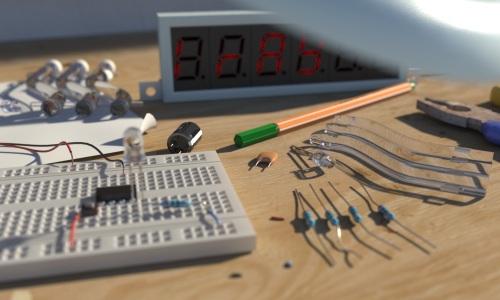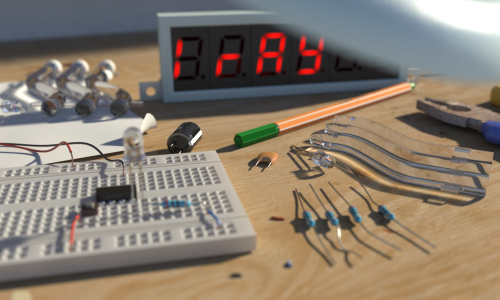The Architectural and Caustic samplers
In previous posts we already shed some light on the new features that we provide in the current (or at least upcoming) iray versions: The architectural and the caustic sampler.
This post will now get a bit more detailed on when and why to use these, as it seems like a lot of people simply enable both of them most of the time, which is not optimal under all circumstances. Note though that there is nothing wrong in enabling both or any of the two samplers: The resulting image will always be free of artifacts, so it features the same reliable behavior as you are used to from the “classic” iray sampler.
But unfortunately there is a performance penalty involved that can decrease overall rendering performance for certain scene types.
So lets start with the new caustic sampler: As the name implies, it helps with rendering very detailed caustics where the “classic” iray sampler had a hard time and thus went for a compromise of not introducing too much noise for them.
In general, the caustic sampler works best for outdoor or design visualization (i.e. turntable scenes), but is of course not limited to these. There are downsides, too, though: If the scene is very detailed and the camera only shows a fraction of the caustics in the scene, the benefits of the caustic sampler will vanish.
On to the new architectural sampler where, again, the name already implies its main use: Architectural (indoor) visualization. In general, each scene that is mostly lit by indirect lighting can profit from this new mode.
One specific example would be a room that is illuminated by light sources placed in neighboring rooms or by outdoor lighting (such as the Sun & Sky model) shining through a small window. As the sampler introduces additional overhead and also only works well when a lot of iterations need to be spent on finalizing the picture, it should be avoided for rather simple scenes, or in general mostly directly lit scenes such as outdoor or design visualization. Also don’t be disappointed if the rendering after some dozen frames still looks more noisy than the “classic” version, most of the time the architectural sampler will catch up later-on.
Note also that it is of course possible to combine both samplers, but not always beneficial as there is additional computational overhead involved that can outweigh the benefits.
The example scene shows a few plastic pieces lying on a table that is illuminated by sunlight. The digital display is using a diffuse transmissive material. Each digital element is illuminated by a small area light that shines through the diffuse transmissive material.
Classic:
There are hardly any effects visible: The plastic does not cast caustics and the illumination of the display that is backlit is barely visible.

Architectural:
Improvements in the visibility of caustics as can be seen on the plastic pieces lying on the table. Also the display is less noisy.

Caustic:
Other caustics become visible as seen on the plastic pieces. Also the light shining through the display is captured much better.

Architectural + Caustic:
The benefits of both samplers become apparent.

–
Rüdiger + Carsten
